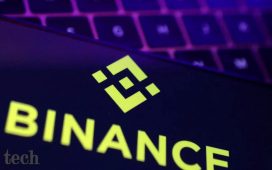
Bitcoin mining has changed a lot over the last few years. As the complexity of the Bitcoin network increases, so does the need for efficient mining methods. One such method is through mining pools, where miners combine their computing power to increase the chances of earning block rewards. In this article, we will explore the structure and operation of a Bitcoin mining pool, diving into essential concepts such as luck, shares, and estimated hashrate.
The Essence of a Mining Pool
What is a crypto mining pool? A mining pool is a collaborative platform where multiple miners work together to mine cryptocurrencies, particularly Bitcoin. By pooling their resources, miners increase the probability of solving a block, thereby securing the Bitcoin network and earning block rewards, which consist of newly minted bitcoins and fees. Miners in a pool share the rewards based on the contribution of their computational power (hashrate) to the pool.
Luck, Shares, and Estimated Hashrate – The Main Concepts of a Mining Pool
In the context of a mining pool, luck refers to the randomness associated with finding a block. The process of mining is based on solving cryptographic puzzles, and the time it takes to find a valid solution can vary. Despite having a high hashrate, a mining pool can go through periods of being “unlucky” (when no blocks are found for a while) or “lucky” (when multiple blocks are found in a short span).
A share represents the amount of work a miner contributes to the mining pool. Shares are solutions to a modified version of the block puzzle, and they serve as a way to measure a miner’s participation in the pool’s efforts. Although shares do not equate to actual block solutions, they are used to distribute rewards within the pool based on each miner’s contribution. The more shares a miner submits, the larger their portion of the rewards when a block is found.
Estimated hashrate is a measure of the computing power a miner or mining pool is contributing to the network. It is an approximation of the number of hashes a pool is generating per second. A higher estimated hashrate improves the chances of solving the next block, thus increasing the probability of earning rewards.
How Does Luck Affect Mining Rewards?
Luck is a significant factor in determining the frequency of rewards. Since block discovery is based on probabilistic cryptographic puzzles, mining pools can experience fluctuations in their success rate. During periods of good luck, a pool may solve more blocks than expected, leading to higher rewards distributed to the miners. Conversely, in unlucky periods, the pool might struggle to find blocks despite consistent hashrate contributions. Over time, the effect of luck tends to average out, but it can cause short-term volatility in rewards. This variance is an inherent part of the impact of Bitcoin mining on individual miners and pools alike.
Mining pools are an essential part of the cryptocurrency mining industry, allowing miners to collaborate and increase their chances of earning block rewards and transaction fees. Key concepts such as luck, shares, and estimated hashrate are central to understanding how pools function and how rewards are distributed. While luck influences short-term earnings, a miner’s contribution, measured in shares, ensures a fair allocation of rewards over time.








